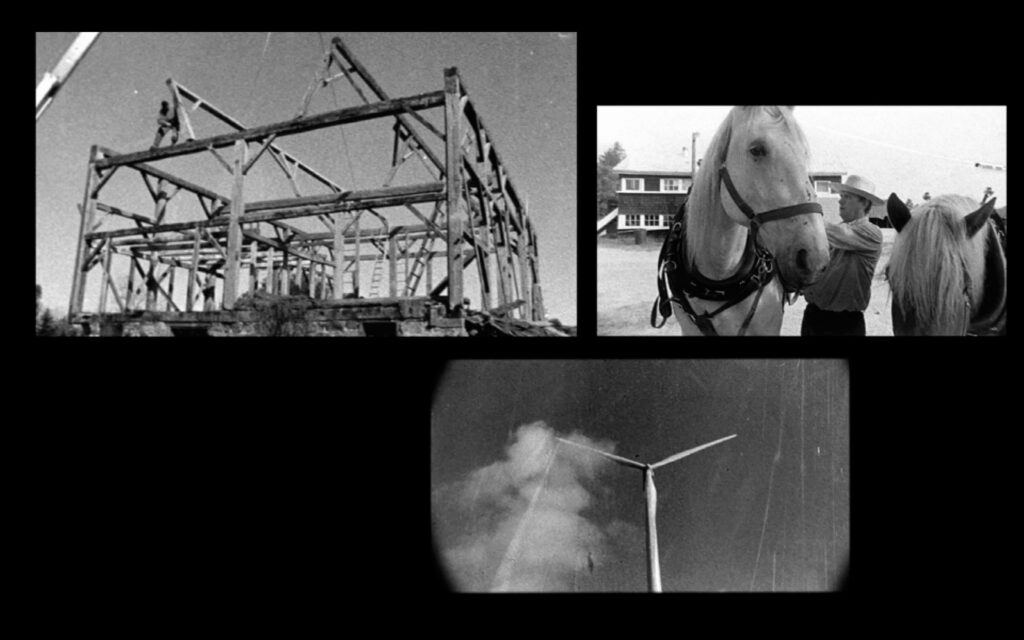(HDV/Orig On 16mm, 15 Min., 2014)
Editing & Sound Design: Marcel Beltran
Compositing: Neil Burns
This multi-framed work weaves several inter-connected threads of loss: of land and agriculture, of property and business. The archival materials in the work have been gleaned from public and personal sources such as the National Archive of Canada, in the story of a nineteenth century aboriginal woman and land rights activist Nahnebahwequay (1824-65) and more recently organic farmer Michael Schmidt, from excerpts of the Farmer’s Advocate and Family Herald publications 1958-1968, also a trip into the artist’s familial past, and the rise and fall of his family’s slaughterhouse and pork processing plant, Hoffman Meats (1951-81), in Kitchener, Ontario. Completed August 2014.
“Phil Hoffman’s Slaughterhouse also enacted a ghostly presence of fragmented histories. Situated in the property’s backfields, the eerie, seven-channel work was one of the most visceral and hauntingly powerful in the exhibition. Sounds spilled from the aging, windowless barn, with images visible only through a series of peepholes in its wood siding, an effect reminiscent of Marcel Duchamp’s Étant donnés, (1946-66). Amidst the sound of clattering film reels and the backdrop of abattoir accessories, Slaughterhouse interwove public and personal archival footage about land and loss in Southern Ontario. Flickering films of the rise and decline of his family’s processing plant, Hoffman Meats, were juxtaposed with images of Nahnebahwequay, a 19th century female Aboriginal land rights activist; a local landscape painter of that era; and contemporary reflections from local farmers. The semi-obscured view of these scenes enacted a feeling of trespassing, of grasping for that always-incomplete experience of memory – and, like Duchamp’s work, the linking of visual clues.” – Joni Low, (Spring 2014), cmagazine Land/Slide: Possible Futures, Markham Museum
SCREENINGS & AWARDS
- Festival du Nouveau Cinéma de Montreal 2014, WNDX Winnipeg
- Black Maria Festival Tour, Director’s Choice Award
- Nouveau Cinema Montreal, 2014
- Images Festival, Toronto 2015
- Dawson City Film Festival 2015
- Award: Black Maria Festival Tour 2014/2015
INSTALLATIONS
Exhibition at Markham Museum, curated by Janine Marchessault
Slaughterhouse first manifested as an installation for the Land/Slide exhibition in 2013, at the Markham Museum, where it could be viewed though several peak holes in the barn board of an old barn, which originated as a 1920’s slaughterhouse in southern Ontario. Documentation: 1, 2, 3, 4
